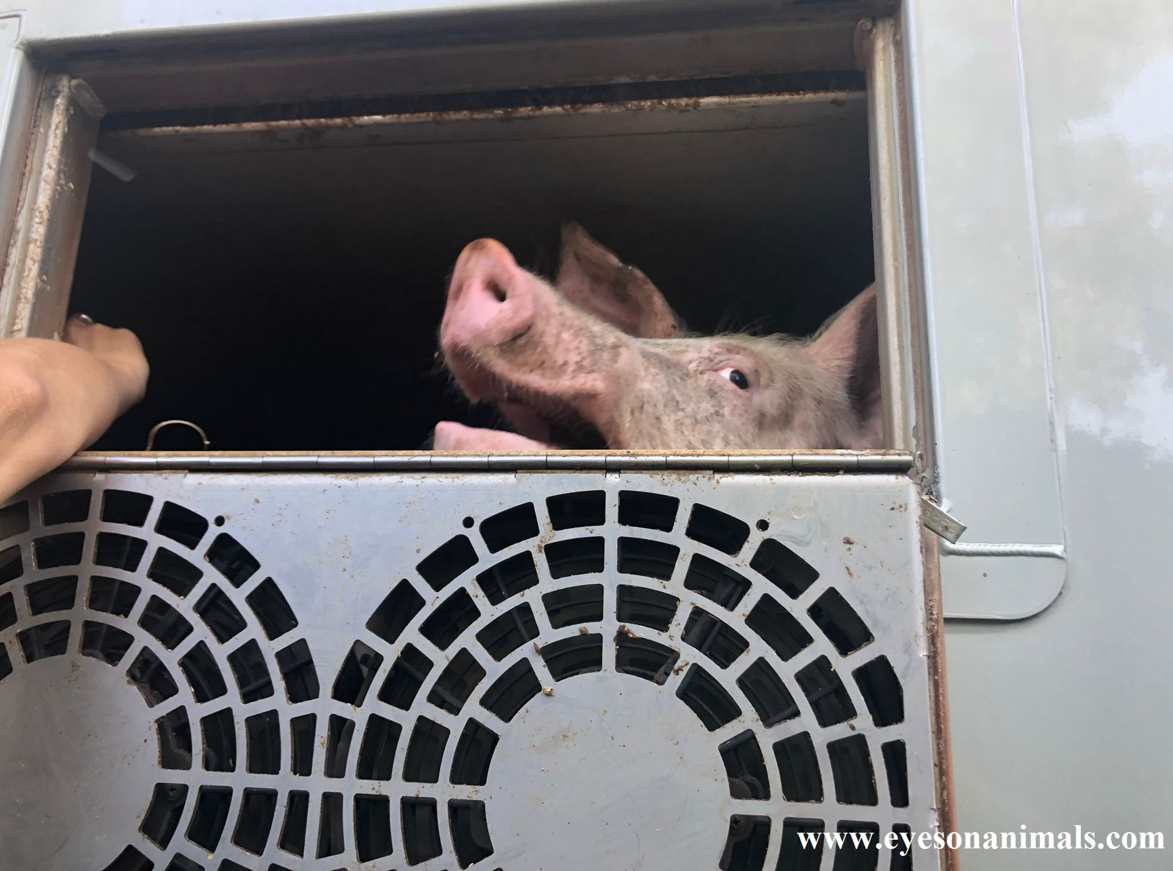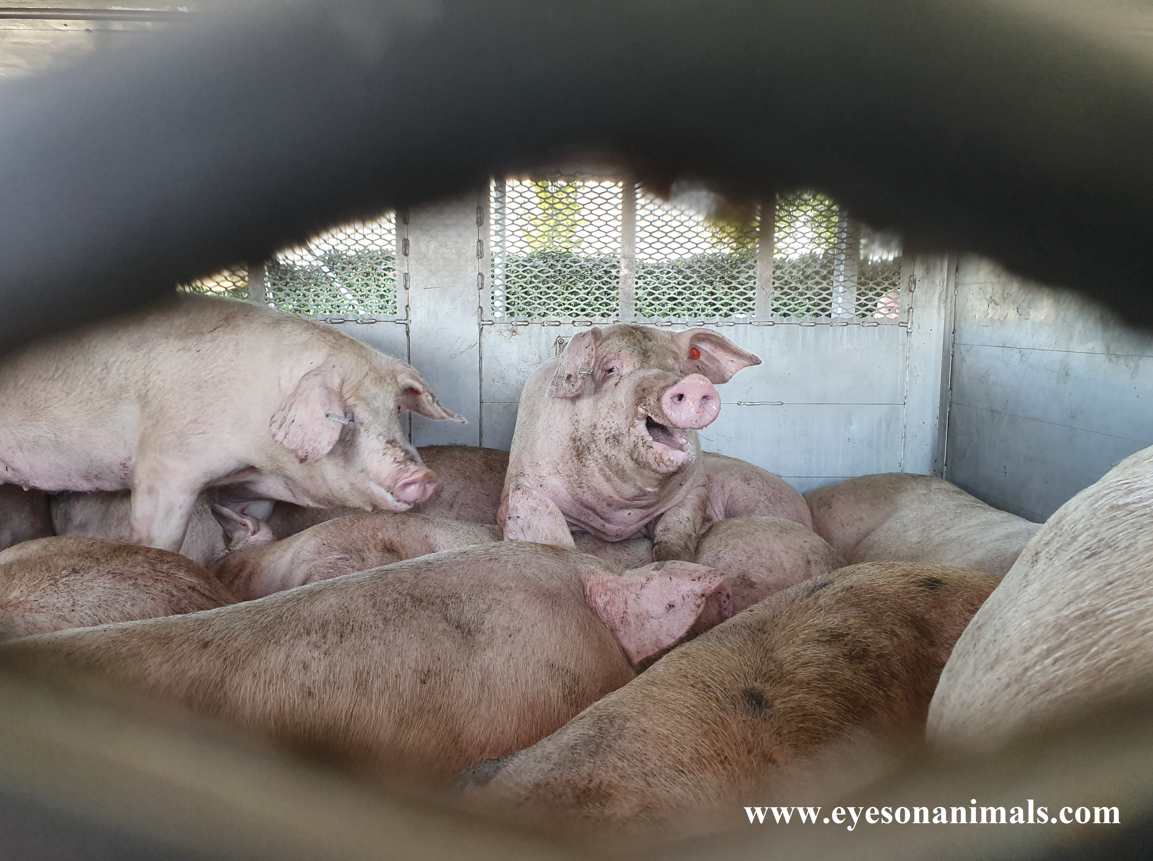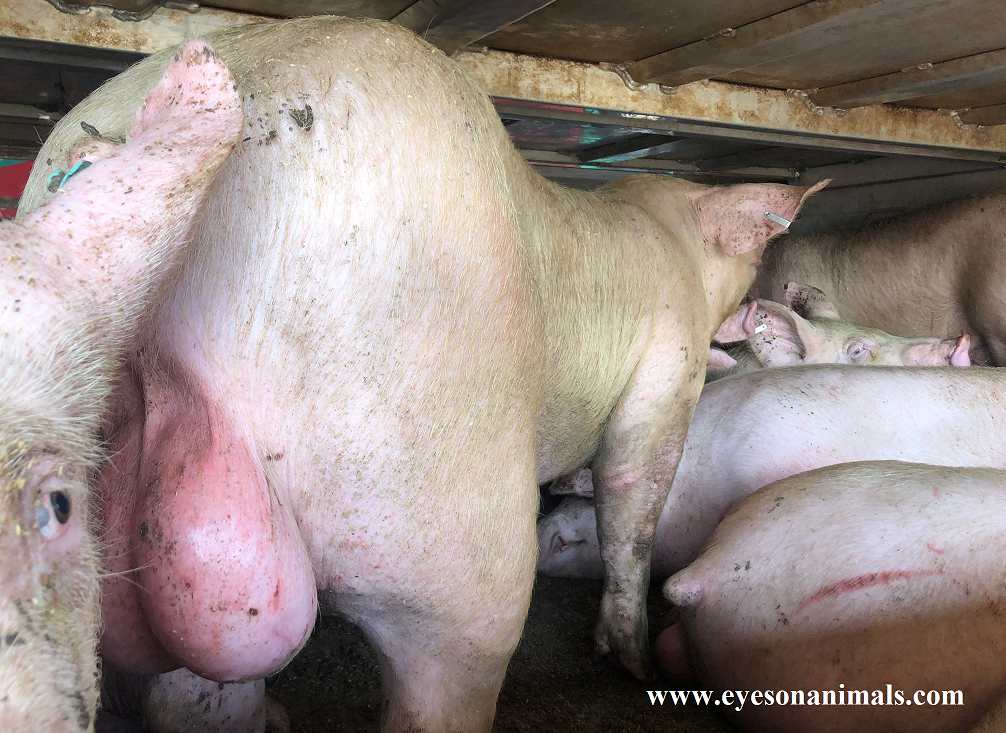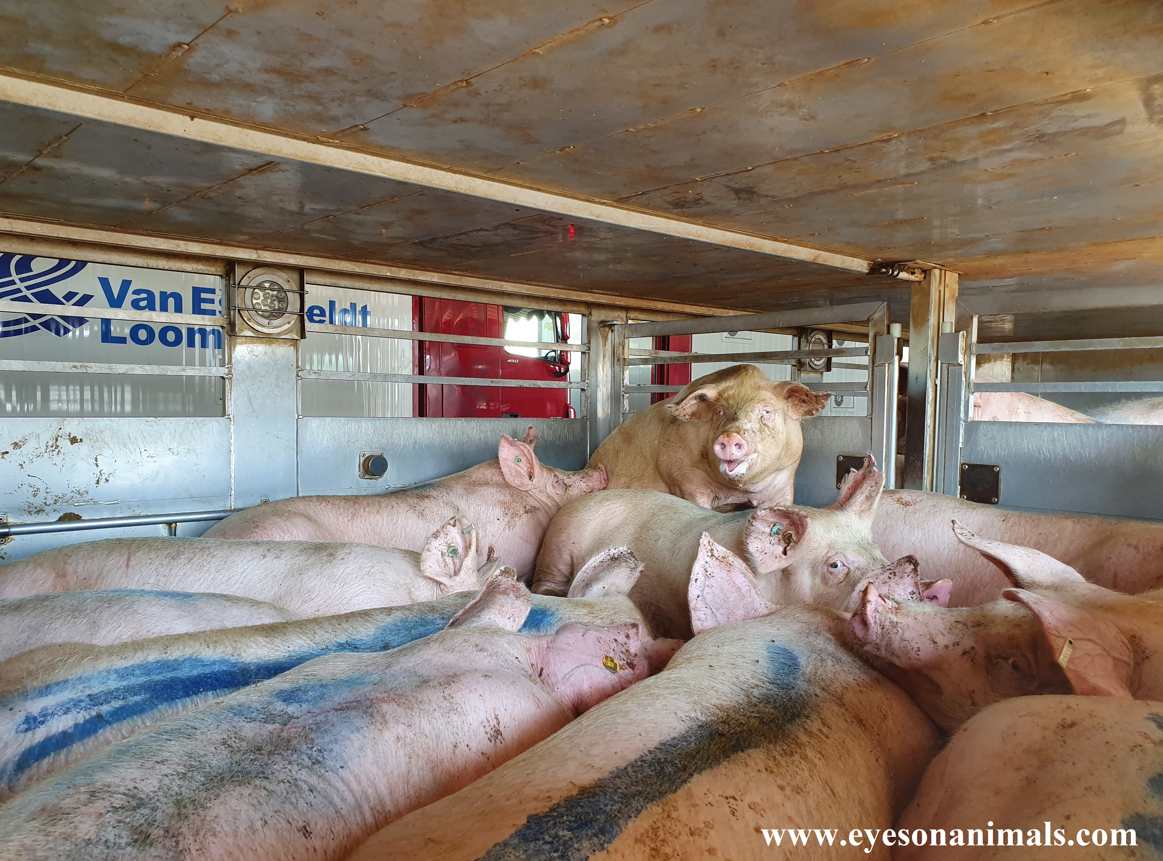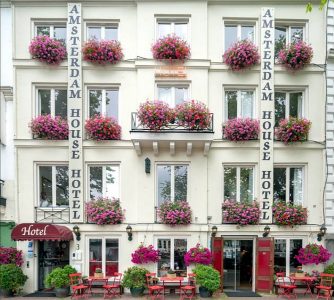Today, in connection with the warm weather (28 degrees Celsius, 50% relative humidity) Eyes on Animals set out to inspect different types of pig transportation trucks. We took temperature and humidity measurements, checked the load density and observed the behaviour of the animals. The trucks were parked under a roofing with fans.
Three cross-ventilated type trucks (completely closed trucks with mechanical ventilation inside and tiny hatches on the side) were inspected, one by Cuppers, one by Berdex and one by Bekkers. We also inspected conventional, naturally ventilated animal trucks (sides of the truck are largely open with bars to prevent escape) as well as trucks with perforated metal plates along the sides. In the conventional trucks it was approximately 1°C warmer and a few percent more humid inside where the animals were than outside. Signs of mild heat-stress were visible, mainly in the higher level of the truck. In the cross ventilated, closed trucks it was a minimum of 3-4°C warmer inside where the animals were than outside (31-32°C). The humidity was also 10-20% higher inside these closed trucks. These are dangerously high values; we saw a lot of heat-stress signs, such as heavy and extremely fast breathing and foaming at the mouth. As soon as the hatches were opened (so we could do our measuring) the pigs stuck their heads out and were gasping for fresh air. In one of the trucks there were 13 pigs per compartment instead of 12- here the heat-stress was most concerning.
In the trucks with perforated metal plates on the side there was also more heatstress (approx. 30-31 degrees and 55% humidity) – these perforated plates restrict ventilation. This is not the first time Eyes on Animals observed extreme heat-stress in cross ventilated trucks and trucks with perforated metal sheets all along the side. We are of the opinion that large scale research should be done regarding these types of trucks and that their use during the summer period, until improvements have been made and scientific findings published, should be stopped.
We also believe that the loading density that is used by the sector during the heat (1 pig less per compartment) is insufficient. The pigs are still so tight inside that they cannot lie down without touching each other and are thus unable to release their body heat adequately. Also the headspace above the pigs is limited- when they stand up there is almost no room for air to move above their backs. We will share our concerns with the sector and the authorities.
